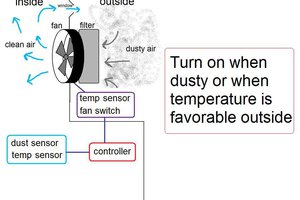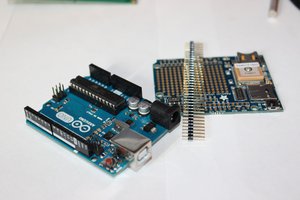I wanted to get a practice project happening for the Arduino, as my ModulUno project is going to be a fairly large project spread over several FEPs (Front End Processors) linked by small RF link boards.
The FEPs will log and control various functions, i.e. weather stations, solar power controllers, RFID trackers for stock, water management controllers, aquaponics controllers, animal feed and water montoring and control, and so forth.
ThermomUno is the beginnings of the software that will handle around six inputs and log them. (It'll lose the LCD shield once it goes into the project, maybe a display with OLED or something that consumes less power, as it's envisaged that the FEPs will be completely standalone with a solar panel and battery at each station, with comms handled by small RF links.
 Ted Russ
Ted Russ
 Debinix
Debinix
 shlonkin
shlonkin
 Douglas Henke
Douglas Henke